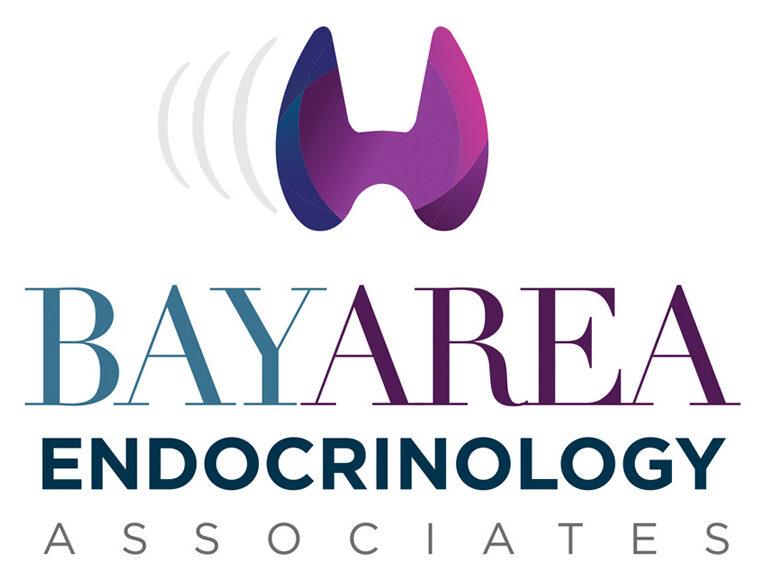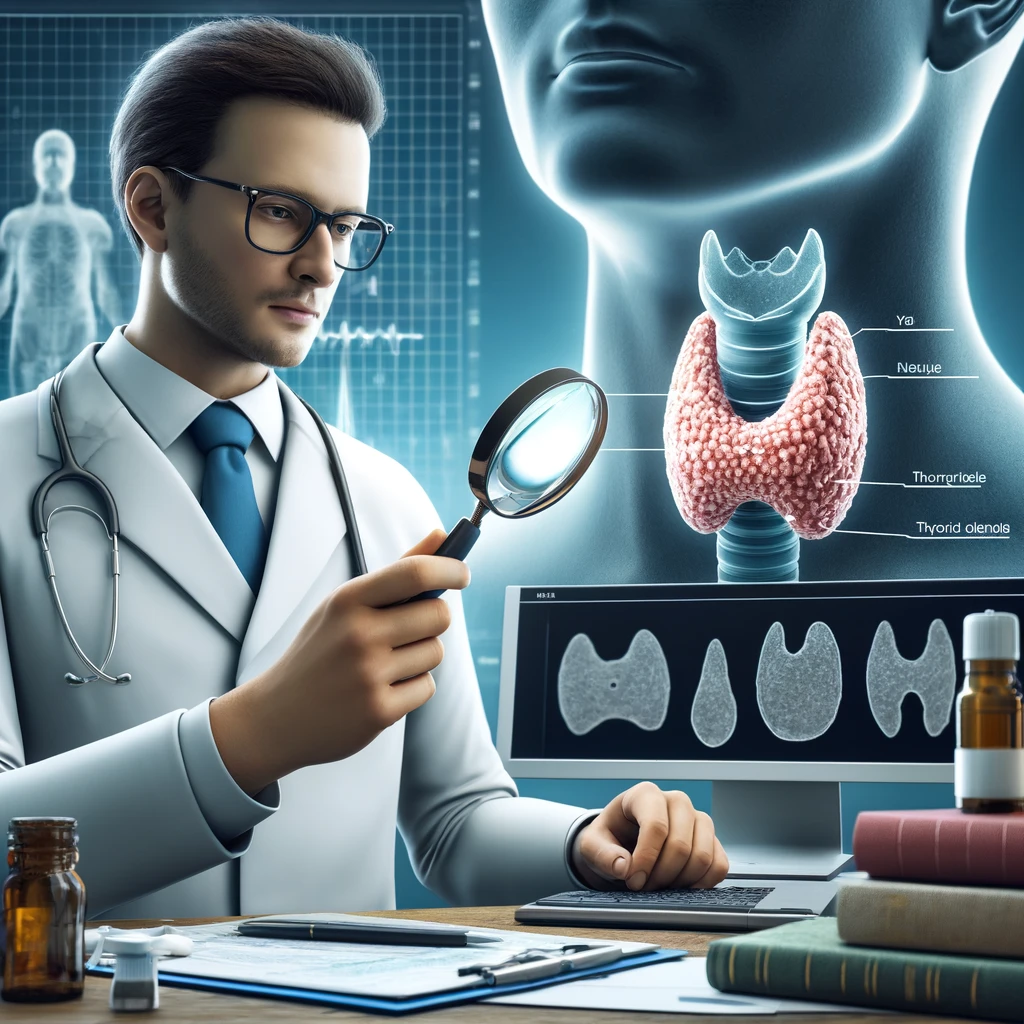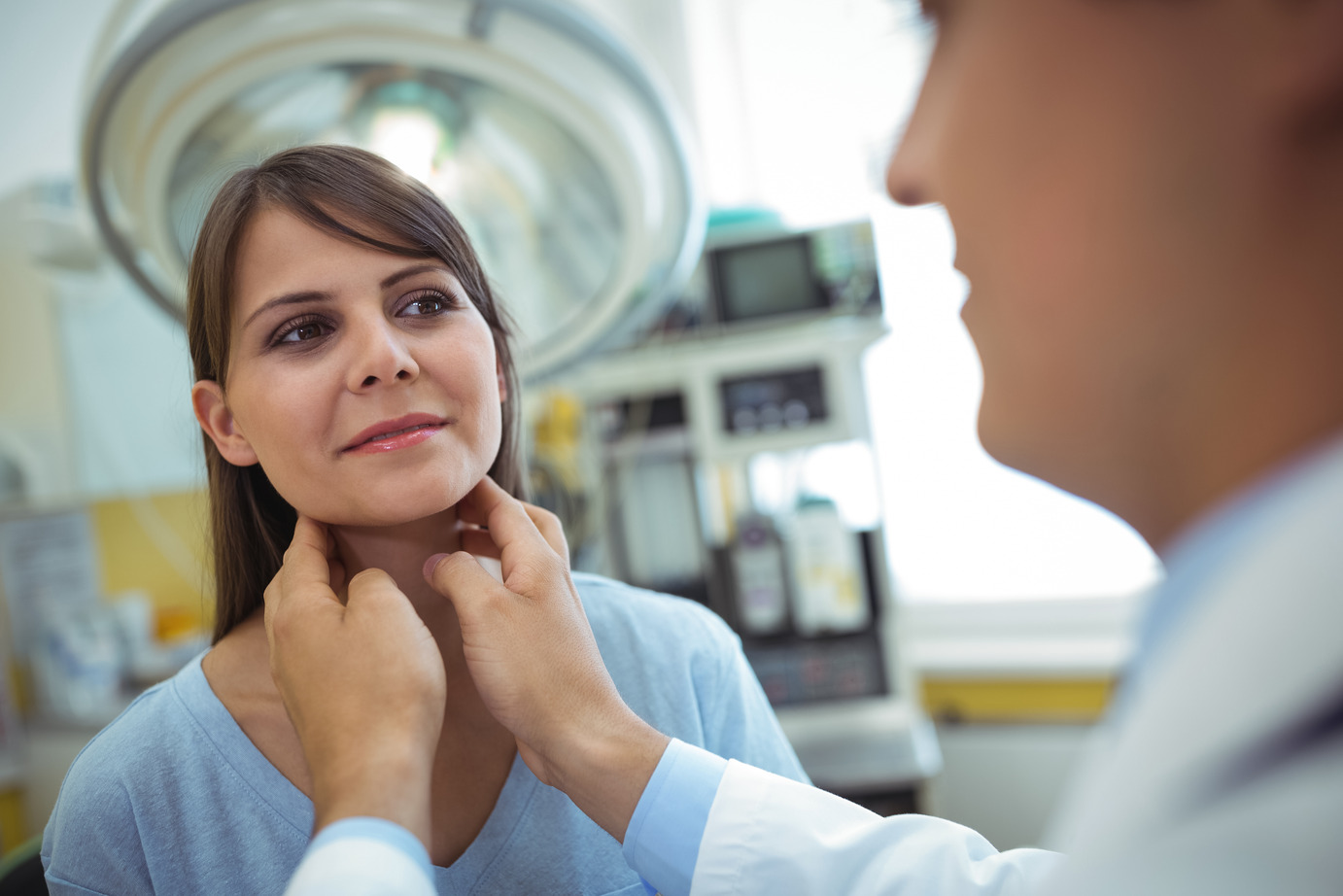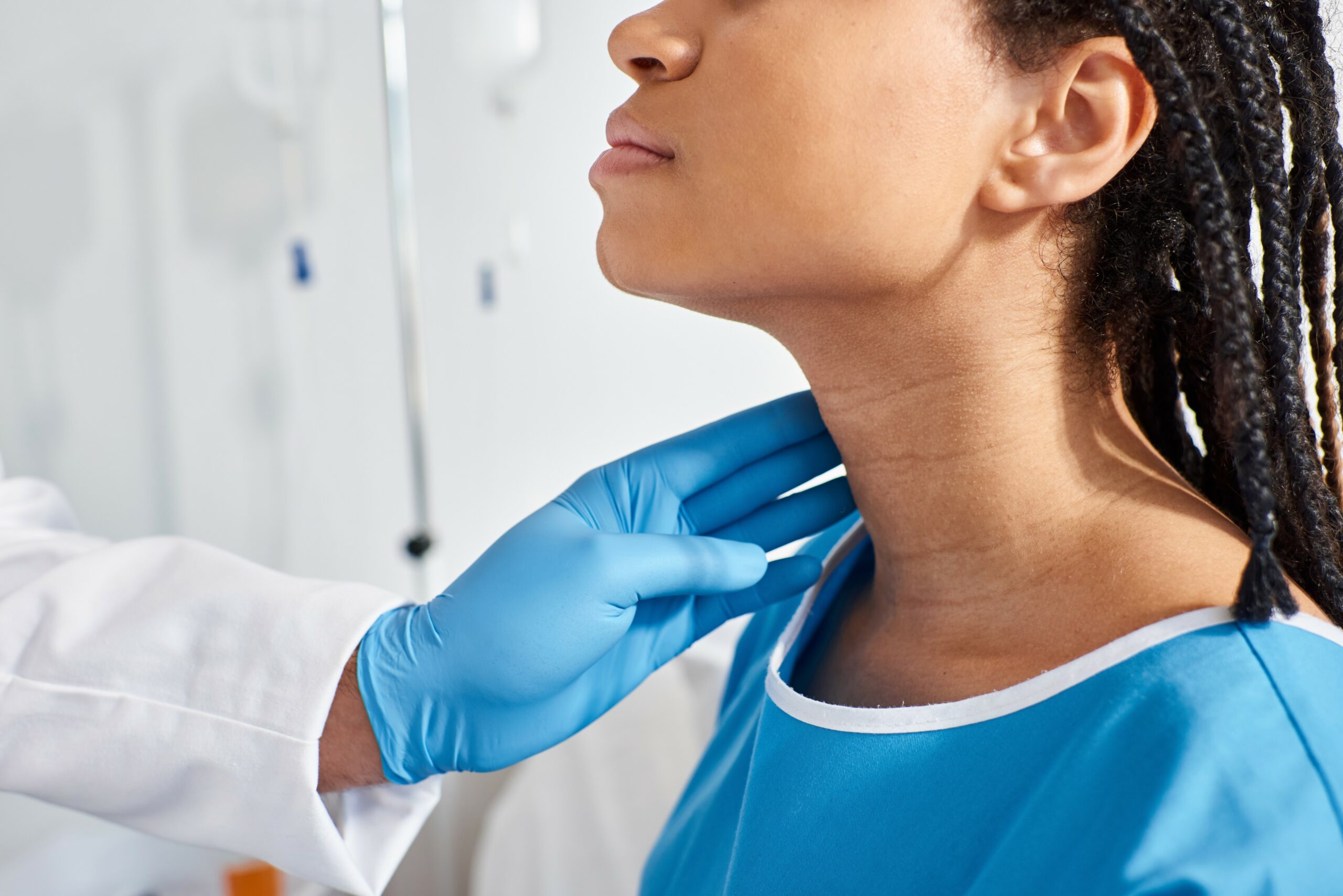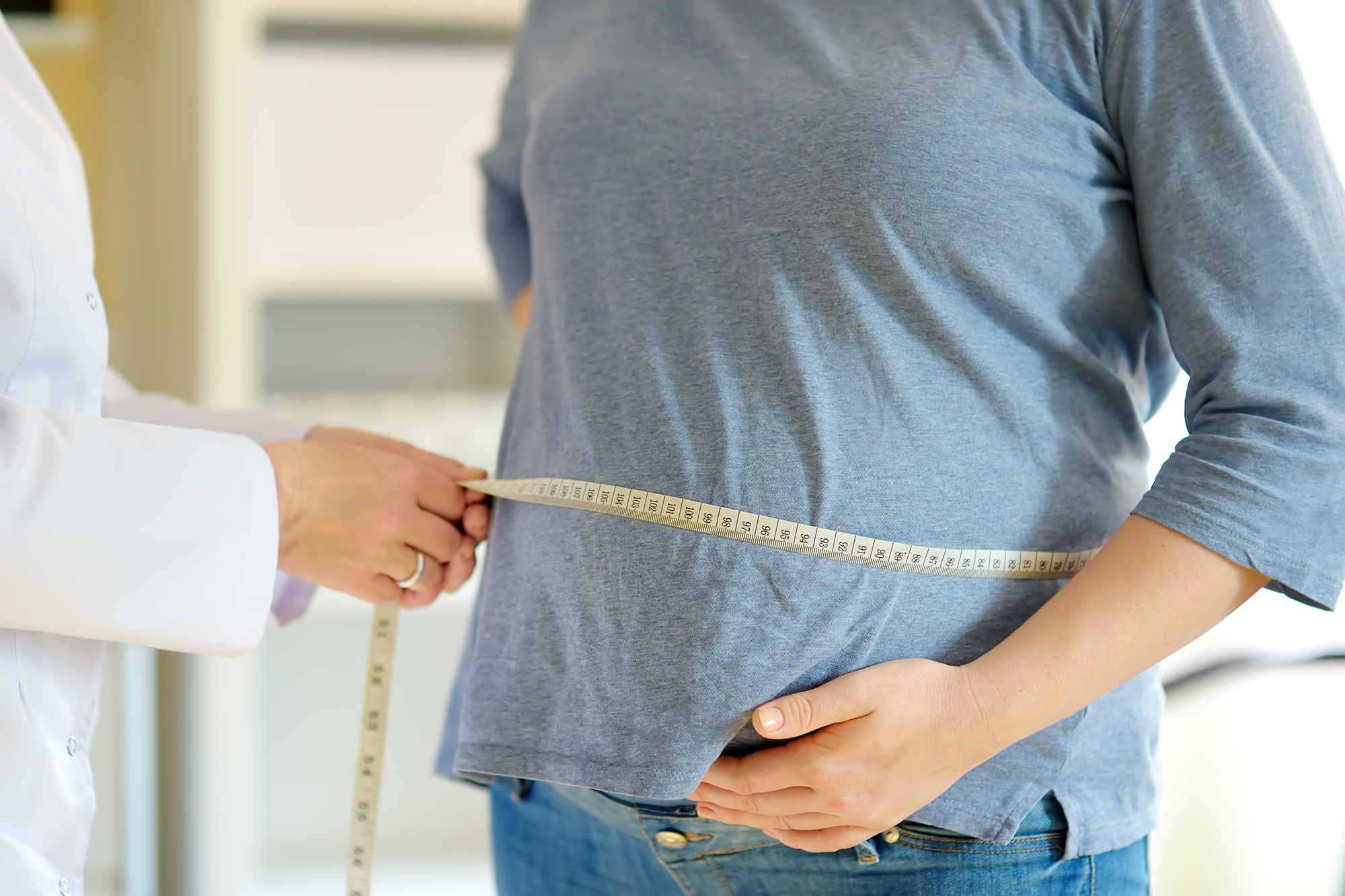An integral component of understanding thyroid health lies in understanding diagnostic procedures. One such procedure is an Ultrasound-Guided Fine-Needle Aspiration Biopsy of Thyroid and Neck Lymph Nodes (FNA), an often-preferred method for diagnosing abnormalities in these areas.
What is an Ultrasound-Guided Fine-Needle Aspiration Biopsy of the Thyroid and Neck Lymph Nodes?
FNA biopsy is a minimally invasive procedure for diagnosing conditions affecting the thyroid gland and neck lymph nodes. The term ‘biopsy’ derives from two Greek words meaning life and sight, respectively. Thus, it gives us a look inside life itself through insight into our internal structures, which helps in medical decision-making.
An FNA biopsy utilizes a thin, hollow needle to extract cells or fluid from your gland or neck lymph nodes for examination under a microscope. While its size may seem small, it is impactful. Physicians can access targeted areas quickly to retrieve samples to be examined under a microscope for signs of malignancies or abnormalities that might exist in these samples.
An essential feature of this procedure is ultrasound guidance. Real-time images provided by ultrasound allow real-time visuals of internal structures of the neck, giving real-time visualizations and precise needle navigation into target areas. By accurately pinpointing nodules or lumps, damage to surrounding tissues is decreased dramatically.
Once samples have been extracted, they’re taken to a pathology lab, where they undergo meticulous scrutiny by an expert pathologist. The expert evaluates each cell structure and composition closely, searching for signs of malignancy or any abnormalities. This step of analysis forms the backbone of the diagnostic process and enables us to select an ideal course of treatment for each individual patient.
Ultrasound-Guided Fine-Needle Aspiration Biopsy of Thyroid and Neck Lymph Nodes is a fundamental element in modern medicine’s arsenal. It provides valuable insight into the glands and neck lymph node conditions while providing a basis for further treatment strategies.
Is an Ultrasound-Guided Fine-Needle Aspiration Biopsy in the Neck Painful?
Medical procedures often cause discomfort or pain for patients. An FNA biopsy of thyroid and neck lymph nodes is no exception. Yet, most reports indicate that it is relatively painless due to its minimally invasive nature and use of local anesthesia.
Before conducting a biopsy, physicians typically apply a local anesthetic to numb the area where a biopsy will take place. Initially, this may cause a slight stinging sensation similar to when receiving an insect bite. But once effective, the area will become numb, and any discomfort during the biopsy should significantly diminish.
A biopsy needle is typically very thin compared to those commonly used for regular injections or blood draws, so its insertion typically goes almost unnoticed by patients. Some may feel slight pressure or discomfort as soon as it reaches its intended site of action. Severe pain should rarely arise.
Post-procedure, any discomfort typically dissipates quickly, and patients can typically return to their regular activities within the same day. You must inform your healthcare provider of any concerns or discomfort experienced during or after their procedure. This will help them provide additional support or interventions to make this experience as comfortable as possible.
How Long Does It Take?
Although times for an Ultrasound-Guided Fine-Needle Aspiration Biopsy can differ depending on individual circumstances, the procedure typically lasts about 20–30 minutes.
The biopsy procedure is typically quick and efficient, taking only minutes to perform. However, most of the time is taken up by pre-procedure setup, which is key for its success.
Initial steps involve positioning ultrasound equipment appropriately based on each patient’s anatomy. The proceeding step involves cleaning and sterilizing the area for biopsies to avoid infection. This is done before providing local anesthesia to numb it during the procedure and ensure maximum patient comfort.
While these preparation steps may appear time-consuming, they are absolutely vital to ensure the accuracy and safety of a biopsy procedure. At Bay Area Endocrinology Associates, our doctors abide by strict protocols to guarantee high-quality care for every client.
Noteworthy is also that post-procedure patients will typically be observed for a brief time to ensure no immediate adverse reactions. Nevertheless, most can resume normal daily activities within hours or immediately afterward.
Understanding the length and process of an FNA biopsy procedure can help ease any anxiety surrounding its performance. At Bay Area Endocrinology Associates, Doctor Pedro Troya and the team are committed to patient education and communication. So, if any additional queries arise about its duration or process, don’t hesitate to contact us.
When Is It Necessary To Have This Procedure Done?
FNA biopsies of these procedures may be recommended when a physician notices nodules or lumps that warrant further investigation. This could be noticed during routine physical exams or while investigating symptoms such as difficulty swallowing, voice changes, or neck swelling.
Ultrasound can help identify nodules’ sizes, locations, and composition (solid or cystic). Unfortunately, ultrasound cannot accurately diagnose malignancy. An FNA biopsy must be conducted on any suspicious nodule to examine its cells and confirm or rule out cancer presence or absence. Additionally, it’s often used to evaluate unexplained lymph node enlargement in the neck.
Remind yourself that the goal is not to cause alarm but rather to ensure the health of your thyroid and neck lymph nodes is not compromised. Early diagnosis greatly increases treatment success rates as well as patient prognoses.
Bay Area Endocrinology Associates can help if you’ve discovered a lump in your neck or have experienced symptoms that concern you. Led by experienced endocrinologist Doctor Pedro Troya, our team is committed to providing comprehensive care from evaluation through treatment of the glads and other endocrine conditions. Please don’t hesitate to contact us for additional information regarding Ultrasound-Guided Fine Needle Aspiration Biopsy or discuss any concerns over your health.
